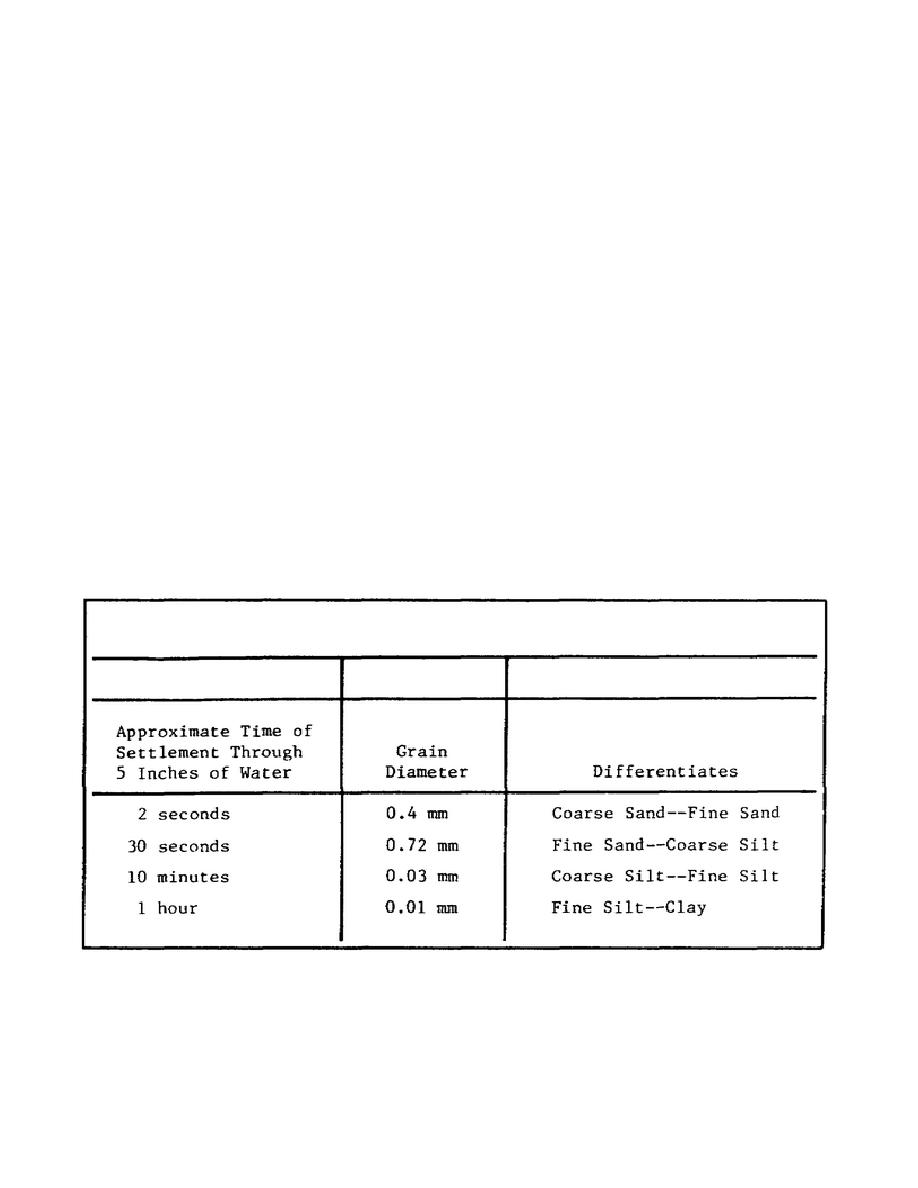
Lesson 2/Learning Event 5
Learning Event 5
IDENTIFY THREE TESTS FOR A HASTY CLASSIFICATION
With the standard methods of field identification supplemented with a few simplified field tests, you can
obtain an approximate and hasty classification of almost any soil. The three simple or hasty tests
outlined below will, for the most part, eliminate the need for specialized equipment such as sieves. The
results of these tests, when used or supplemented with the results of the tests described in the previous
learning events, will give at least a tentative classification to almost any soil. The schematic (Figure 17)
may be used as a guide to the testing sequence in the process of assigning a symbol to a sample of soil.
SEDIMENTATION TEST
From the visual inspection test described earlier, it is relatively simple to approximate the comparative
proportions of sand and gravel in a sample of soil by spreading a dry sample out on a flat surface, and
separating the gravel particles by hand. Separating the fines from the sand particles is more difficult
although just as important. Smaller particles will settle through water at a slower rate than large
particles. Place a small amount of soil (such as a heaping tablespoon measure) in a transparent cup or
jar. Cover the sample with about 5 inches of water, and agitate by stirring or shaking. The soil will be
completely suspended in the water. With most cohesive soil you will have to break up the lumps of soil
before adding the water. Do this by grinding the soil in a canteen cup with an improvised wood pestle.
After the soil particles have been thoroughly dispersed in the water and then left, they will start to settle,
beginning with the larger size particles, as indicated in Table 3.
TABLE 3. SETTLING TIMES FOR SMALL PARTICLES
43



 Previous Page
Previous Page
